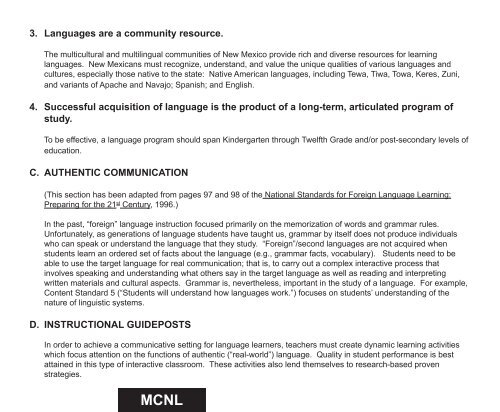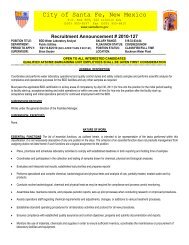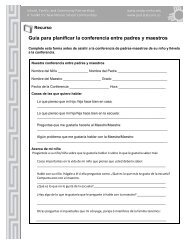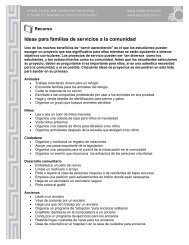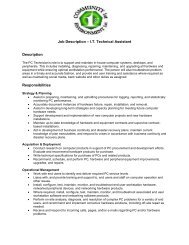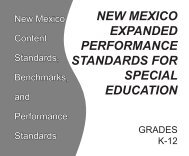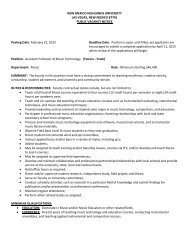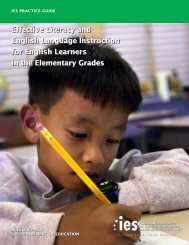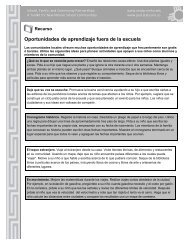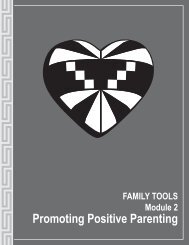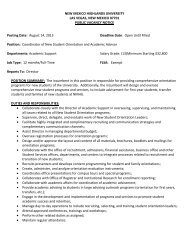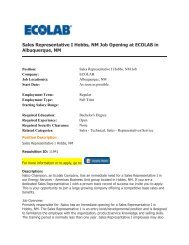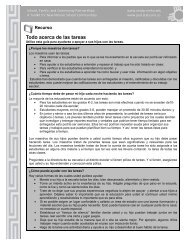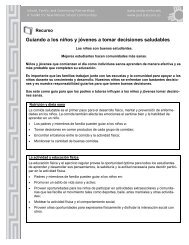MCNL - Center for the Education and Study of Diverse Populations
MCNL - Center for the Education and Study of Diverse Populations
MCNL - Center for the Education and Study of Diverse Populations
You also want an ePaper? Increase the reach of your titles
YUMPU automatically turns print PDFs into web optimized ePapers that Google loves.
3. Languages are a community resource.<br />
The multicultural <strong>and</strong> multilingual communities <strong>of</strong> New Mexico provide rich <strong>and</strong> diverse resources <strong>for</strong> learning<br />
languages. New Mexicans must recognize, underst<strong>and</strong>, <strong>and</strong> value <strong>the</strong> unique qualities <strong>of</strong> various languages <strong>and</strong><br />
cultures, especially those native to <strong>the</strong> state: Native American languages, including Tewa, Tiwa, Towa, Keres, Zuni,<br />
<strong>and</strong> variants <strong>of</strong> Apache <strong>and</strong> Navajo; Spanish; <strong>and</strong> English.<br />
4. Successful acquisition <strong>of</strong> language is <strong>the</strong> product <strong>of</strong> a long-term, articulated program <strong>of</strong><br />
study.<br />
To be effective, a language program should span Kindergarten through Twelfth Grade <strong>and</strong>/or post-secondary levels <strong>of</strong><br />
education.<br />
C. AUTHENTIC COMMUNICATION<br />
(This section has been adapted from pages 97 <strong>and</strong> 98 <strong>of</strong> <strong>the</strong> National St<strong>and</strong>ards <strong>for</strong> Foreign Language Learning:<br />
Preparing <strong>for</strong> <strong>the</strong> 21 st Century, 1996.)<br />
In <strong>the</strong> past, “<strong>for</strong>eign” language instruction focused primarily on <strong>the</strong> memorization <strong>of</strong> words <strong>and</strong> grammar rules.<br />
Un<strong>for</strong>tunately, as generations <strong>of</strong> language students have taught us, grammar by itself does not produce individuals<br />
who can speak or underst<strong>and</strong> <strong>the</strong> language that <strong>the</strong>y study. “Foreign”/second languages are not acquired when<br />
students learn an ordered set <strong>of</strong> facts about <strong>the</strong> language (e.g., grammar facts, vocabulary). Students need to be<br />
able to use <strong>the</strong> target language <strong>for</strong> real communication; that is, to carry out a complex interactive process that<br />
involves speaking <strong>and</strong> underst<strong>and</strong>ing what o<strong>the</strong>rs say in <strong>the</strong> target language as well as reading <strong>and</strong> interpreting<br />
written materials <strong>and</strong> cultural aspects. Grammar is, never<strong>the</strong>less, important in <strong>the</strong> study <strong>of</strong> a language. For example,<br />
Content St<strong>and</strong>ard 5 (“Students will underst<strong>and</strong> how languages work.”) focuses on students’ underst<strong>and</strong>ing <strong>of</strong> <strong>the</strong><br />
nature <strong>of</strong> linguistic systems.<br />
D. INSTRUCTIONAL GUIDEPOSTS<br />
In order to achieve a communicative setting <strong>for</strong> language learners, teachers must create dynamic learning activities<br />
which focus attention on <strong>the</strong> functions <strong>of</strong> au<strong>the</strong>ntic (“real-world”) language. Quality in student per<strong>for</strong>mance is best<br />
attained in this type <strong>of</strong> interactive classroom. These activities also lend <strong>the</strong>mselves to research-based proven<br />
strategies.<br />
<strong>MCNL</strong>


